The Spanish Colonial Arts Society’s Nuevo Mexicano Heritage Arts Museum is home to a staggering collection of art dating back to the 16th century, a voluminous library, and an archive. Almost half of their collection is comprised of pieces collected from Spanish Market artists from the 1920s to the present day. It’s the only John Gaw Meem-designed residential building that is open to the public in Santa Fe. They kindly opened their doors and guided us on a fascinating tour of their vaults. We’re eager to share with you some of their many treasures.
Dive Into a Treasure Trove of Historical Objects at the Spanish Colonial Arts Society
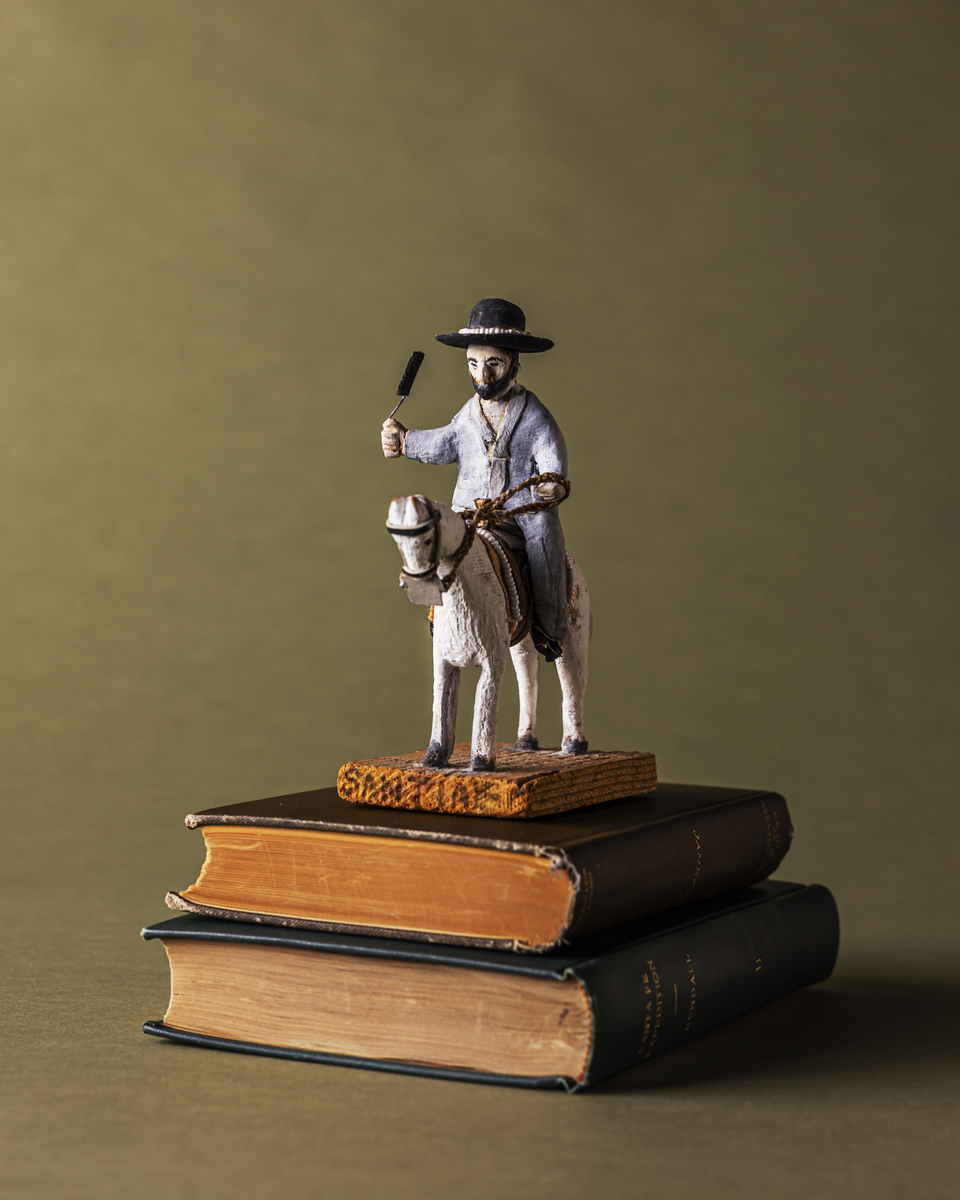
A diminutive Santiago or St. James sits firmly astride his horse, reins clasped securely in his left hand. Victories in many seemingly unwinnable battles were attributed to the miraculous appearance of Santiago, patron saint of Spain and Galicia. “Artist M.A. Chavez was one of the original Spanish Market artists,” says curator Jana Gottshalk of this piece. “This tiny Santiago is uncharacteristic of his usual work which is usually unpainted bultos.”
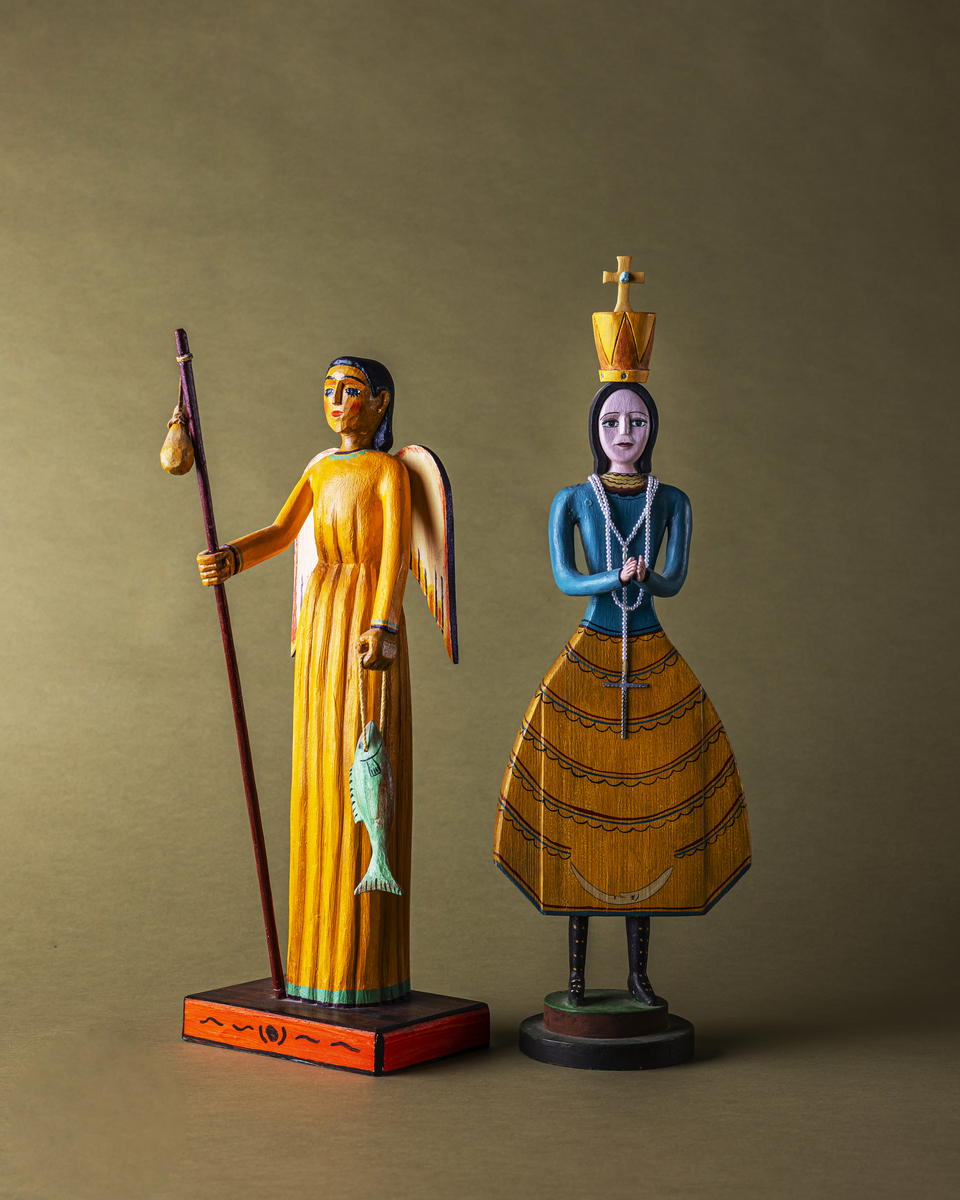
The tradition of creating bultos— three dimensional religious sculptures—continues in the work of contemporary santeros who combine expert carving, and often bold colors, to depict Catholic saints. St. Rafael (on the left), one of the seven Archangels and the patron saint of travelers, the blind, medical workers, and happy meetings, is typically depicted holding a staff and a fish, as he is in this work by Luis Tapia. Next to him (on the right), is Anita Romero Jones’ Our Lady of the Rosary from the 1980s. Both draw on the rich history of early Hispano settlers, in ways that are thoroughly modern.
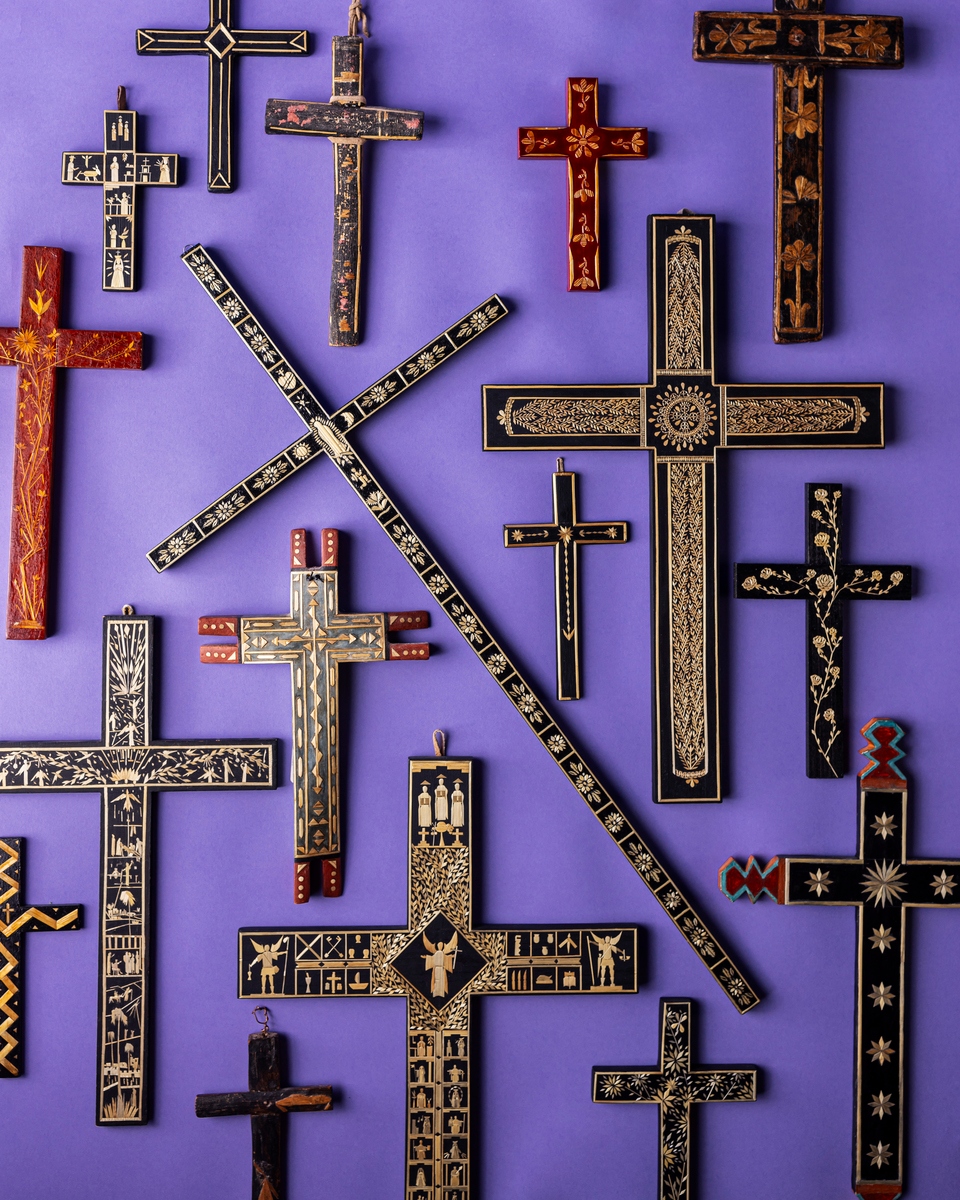
Artisanship in Every Object
Early Spanish artisans arriving to New Mexico were expert improvisers. Lacking the materials they needed— wood, ivory, and shell—to make traditional marquetry crosses, they looked locally for substitutes. Straw and cornhusk were readily available and in the hands of skilled craftspeople, provided the effect of shimmering gold, captured in the candlelight of churches and chapels.
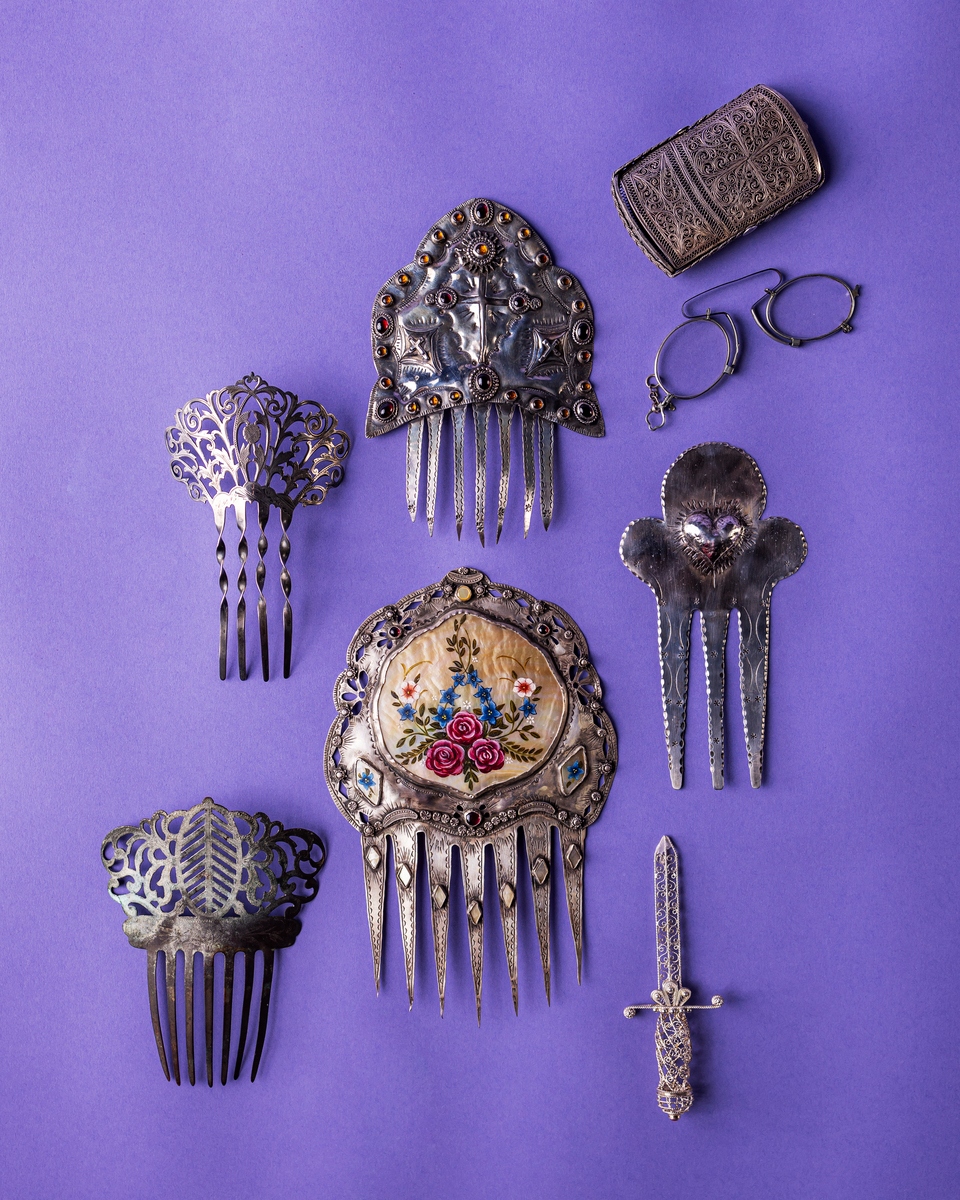
Personal Objects
The collection at the Nuevo Mexicano Heritage Arts Center encompasses not only religious objects, but also deeply personal ones, giving us a glimpse into the lives of their owners. Perfect examples are treasures like the silver filigree glasses case from Mexico (third row/far right, top) that held a gentleman’s pair of pince-nez, or the engraved sterling silver peineta (first row/far left, top)—an elaborate hair ornament—that would have been worn by a woman in the 1800s. Contemporary pieces—like the collaboration between Lawrence Baca and Arlene Cisneros Sena (middle row, bottom)—carry on the tradition of this timeless, wearable art.
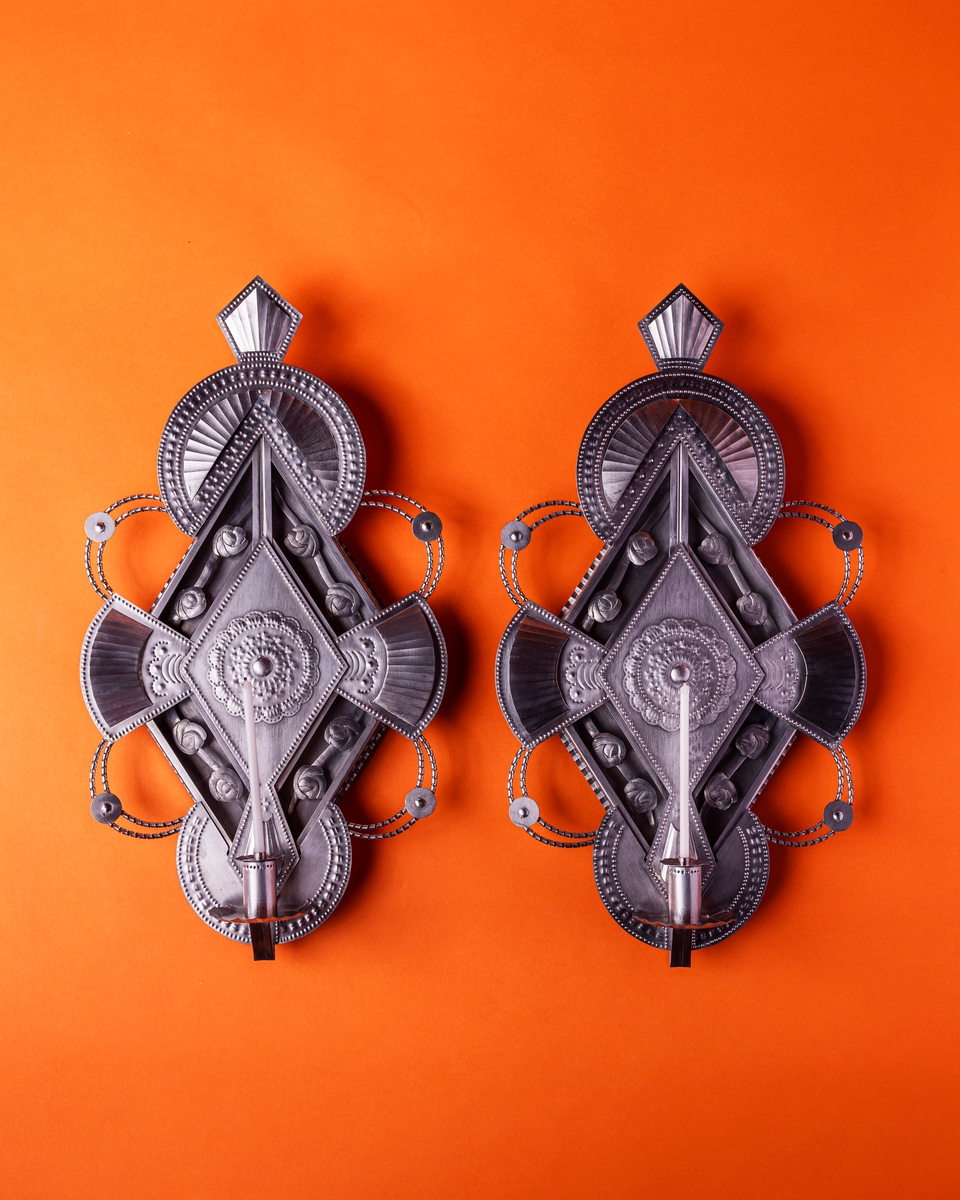
Poor Man’s Silver
Throughout the colonial period, decorative tinwork made its way from Mexico to New Mexico. Sometimes called “poor man’s silver,” these pieces could be elaborate Rococo-esque confections with elaborate, hand-stamped patterns and intricate shapes. Contemporary artist Justin Gallegos Mayrant pays tribute to the artisans who worked in Rio Arriba County with these two ornate sconces, purchased by Spanish Colonial Arts Society in 2017.
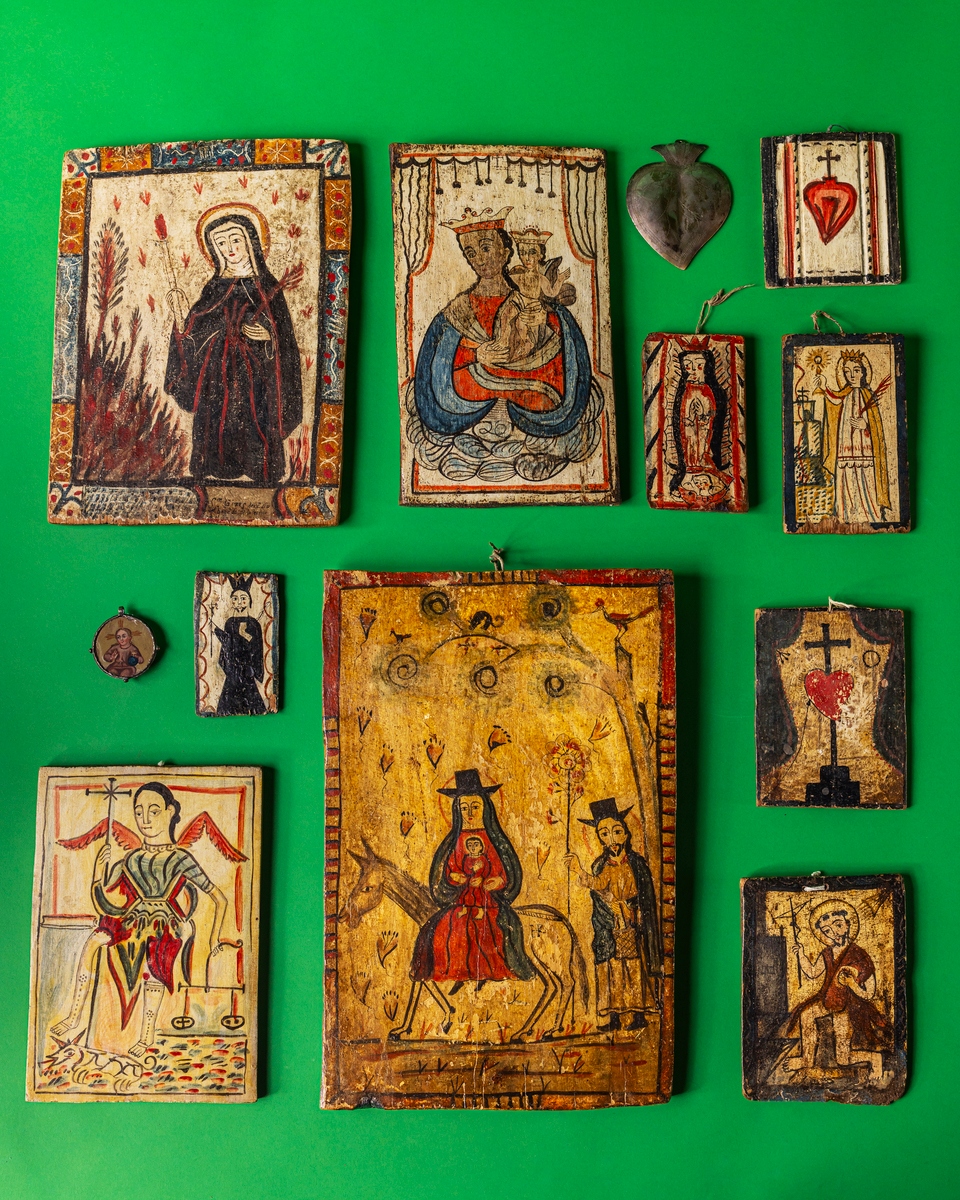
Santeros and Retablos
Retablos is two-dimensional art practiced by santeros, aka “saint makers”, which are usually small paintings or wooden altarpieces or other found materials that hold spiritual value for those who make them. The Spanish Colonial Arts Society is home to hundreds of these devotional objects made by artists including Pedro Antonio Fresquís, known as the Truchas Master. “One of the best tools for identifying the New Mexico retablo and bulto artists are how the artist executes the eyes and hands,” says curator Jana Gottshalk, “However, Fresquís is a bit of a rebel. His work is often unique looking, veering away from the traditional composition and adding more decorative elements and less of a single-figure focus.”
Story by Julia Platt Leonard / Photography by Tira Howard
Subscribe to TABLE Magazine‘s print edition.

